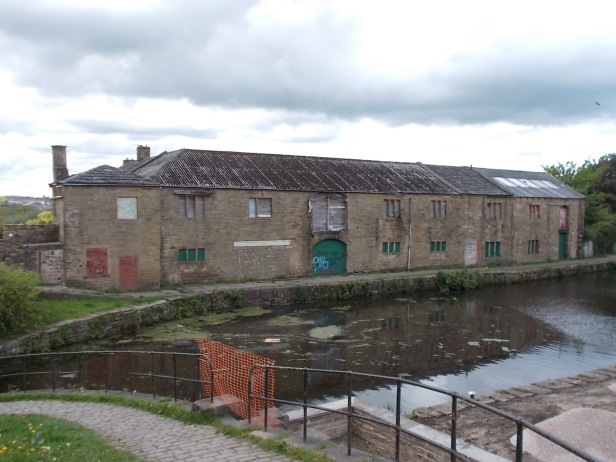Enfield Wharf dates from 1802, when the Leeds & Liverpool Canal was extended to Clayton-le-Moors. The land to build the wharf was bought from Lord Petre of nearby Dukenhalgh Hall. He was not wholly in favour of the project though and expressed concern that the canal side paths might be used by poachers to enter into his estate.

The wharf consisted of a large warehouse on one side of the canal and a stable block on the other. This housed the horses that pulled the boats along the towpath. Both buildings still stand today.
The wharf was the terminus of the canal for the next eight years, but it was no dead end. Turnpike roads connected it to Clitheroe, Blackburn and Burnley. Goods were often sent on to Liverpool, Manchester and Hull. These would include foodstuffs such as flour, malt, hops and gin. Textiles such as cotton, flax and leather were also handled, along with industrial staples such as iron, lead and glass.
By 1810, the canal had been extended to reach Blackburn. Enfield Wharf then underwent a rapid expansion. The main warehouse was enlarged and large sheds were erected close by during the 1820s. By the 1830s, an agent for the canal company, John Walls, was in residence, living in part of a warehouse that had been converted to a house. Over the next hundred years, the fortunes of the warehouse ebbed and flowed, with waves of investment and neglect.

By 1930, the canal company had wound down its operational use of the warehouse. By this date, much of the traffic had moved to the wharves in the nearby small town of Church. The warehouse was then leased to Prospect Mill.
In 1943, a Mr Beck had the unenviable task of writing to the Leeds & Liverpool Canal Company to tell them of the damage from a recent arson attack. John James Pickup, an employee of Prospect Mill, had set fire to the warehouse. It had been used to store 250,000lb weight of raw cotton on both of its floors. The fire caused a huge amount of damage – a sum of £10,000 was reported in the Northern Daily Telegraph. Mr Beck informed the canal company that the roof had collapsed. He stated “There would be 7 or 8 queen posts trusses, the roof covering being of grey slate. It was rather difficult to asses the damage to the floor, but it was sagging under the excessive weight on joists … The four main doors giving access to both floors on both walls of the warehouse are burnt or broken in parts, most of the windows seem to have suffered damage from the fire…The wooden…crane on the yard side has collapsed breaking castings and gearings in the process. The similar crane on the canal side appeared to be in a dangerous condition”.
The warehouse was repaired, but its queen post roof was never restored to its full glory and the roof line was subsequently lowered. The building was then used by Hodgsons Woodworkers. The area in front of the stable block became a timber yard. In more recent years, the stable block became the home of the Sea Scouts.

Seeing the Site Today
Today, the stable block on the east bank is in good condition and has been recently renovated. It is now used as a marital arts gym. Wharf Garage now uses the warehouse, and the side where the business is run from looks in good condition. Unfortunately, this cannot be said for the side facing the canal. This has blocked entrances and windows, and the loading bay doors have seen better days. Canal House, where successive canal agents lived, is now rented out privately. The small office building next to it has bricked up doors and windows.
When the site was assessed for British Waterways in 2009, it was given a high heritage rating – the buildings are grade II listed. It would be wonderful if the complex could be used by the tourist or heritage industry, as the wharf at Burscough has been (see our page on it here). In the meantime, at least the buildings at Enfield Wharf are in use and have not been left derelict. However, there is graffiti on the unused canal side of the warehouse and this needs to be removed. The canal is popular with local walkers and improvements to the building would greatly enhance the appearance of the wharf.
Site visited by A. Bowden 2021
Access
Enfield Wharf is on Blackburn Road and the site straddles either side of the Leeds & Liverpool Canal. There are good views of the site from the road bridge over the canal, and from the canal towpath. There is a car park on nearby Canal Street.
References
Heritage Assessment of Enfield Wharf, Clayton-le-Moors for British Waterways, (2009). Pdf document available online.
historicengland.org.uk/listing/the-list/list-entry/1205921